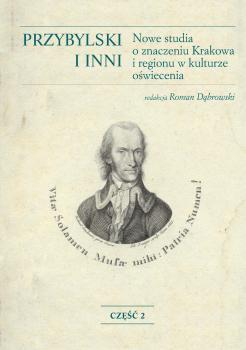Przeszłość przyszłości, czyli motyw vaticinatio ex eventu w Lechiadzie Jana Pawła Woronicza .......... 221
Synopsis
THE PAST OF THE FUTURE, OR THE VATICINIUM EX-EVENTU THEME IN JAN PAWEŁ WORONICZ’S “LECHIAD”
The most famous works by Jan Paweł Woronicz, i.e. Appearance of Emilka, Temple of Sibyl and Hymn to God were written in the atmosphere of disappointment, despair, and longing for freedom after the Third Partition. The last work was to enter the national songbook which Woronicz had planned, along with such works as Assarmot and Lech. The poet also intended to create a national epic – Jagiellonida. In 1807, however, he gave up working on the songbook, as he became occupied by another activity, namely preaching and speaking. This was undoubtedly influenced by Woronicz’s fast political and religious career. In 1815 he was appointed the diocesan bishop of Krakow. During his activity in Krakow, the author of the Temple of Sibyl undertook many activities aimed at promoting the nationa culture. He became the originator and creator of the Historical Cabinet project as well as the entire interior of the bishop’s palace in Krakow. To one of the rooms of the Krakow palace, he commissioned paintings by Michał Stachowicz on the theme of legendary history, depicting Assarmot, Lech, Krakus, Wanda and other legendary figures. In the Krakow iconographic project, Woronicz articulated problems that were important to him after the Third Partition. The poet’s interest in legendary history was expressed earlier in Assarmot and Lechiada, which are the subject of this article.





